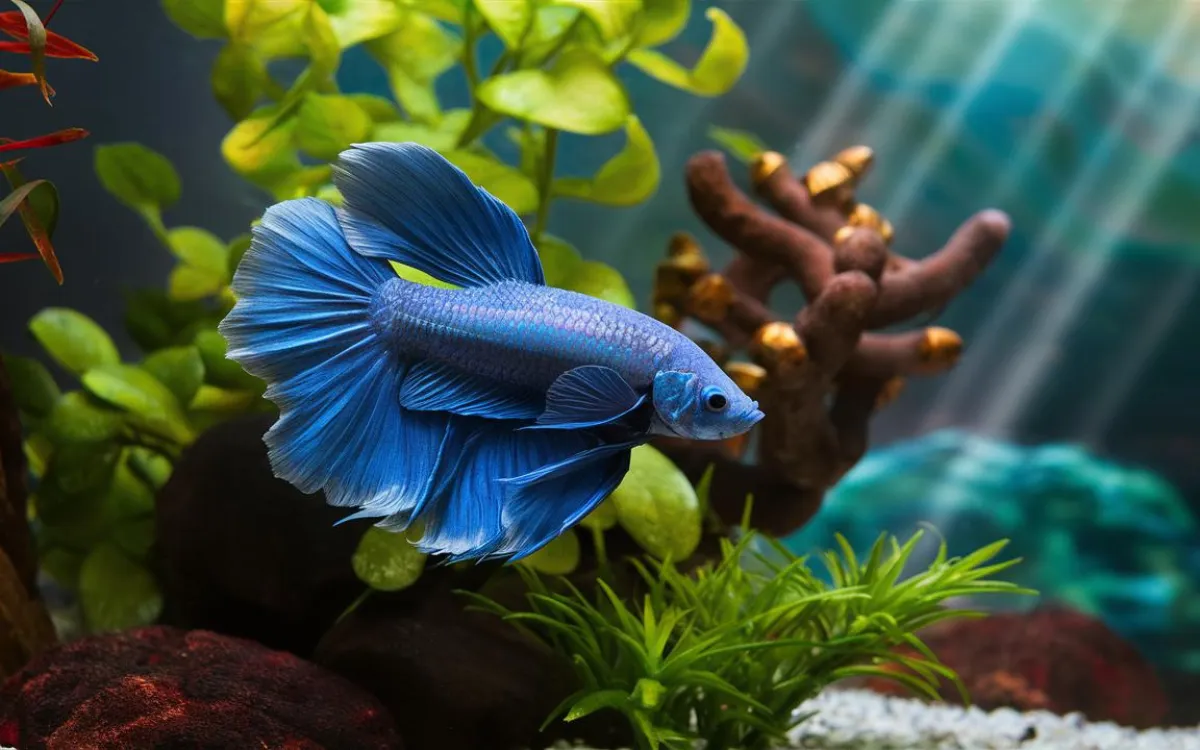Discover the mesmerizing beauty of the blue marble betta, a unique variety of betta splendens with stunning swirls of blue and white. Learn about their captivating colors, patterns, and how to provide them with the best care.
Betta Fish Information will explore essential tank setup, diet, water parameters, and important considerations for keeping these beautiful fish happy and healthy.
Blue Marble Bettas
The blue marble betta, with its mesmerizing swirls of blue and white, is a captivating addition to any aquarium. This unique variety of betta splendens, also known as the “marble blue betta,” is a true testament to the beauty and diversity of these fascinating fish.
Unique Colors and Patterns:
The blue marble betta’s beauty lies in its intricate patterns. Imagine a canvas of deep blue, splashed with swirls of creamy white, creating a mesmerizing marble effect. These patterns can range from subtle, delicate swirls to bold, dramatic marbling, making each blue marble betta a unique work of art.
Differences from Other Betta Varieties:
While other betta varieties may boast vibrant colors or elaborate fin shapes, the blue marble betta stands out with its captivating color combination and unique pattern. This makes it a popular choice for betta enthusiasts seeking a truly distinctive fish.
Caring for Your Blue Marble Betta

Setting Up a Tank
A cramped tank can lead to stress and health issues for your blue marble betta. Aim for a minimum of 2.5 gallons, but a larger tank, ideally 5 gallons or more, is always preferable. This allows your betta to swim freely and explore their surroundings.
Essential Tank Equipment
Filter: A filter is crucial for maintaining water quality by removing waste and debris. Choose a filter appropriate for the tank size and ensure it provides adequate water flow.
Heater: Blue marble bettas thrive in warm water. A heater is essential to maintain a consistent temperature between 78-82 degrees Fahrenheit.
Hiding Spots: Bettas are naturally shy and enjoy having a place to retreat. Provide a cave, a plant, or a decorative piece that offers a sense of security.
Creating a Visual Feast
While your blue marble betta may not see colors in the same way humans do, they can still appreciate visual stimulation. Consider adding plants, rocks, or driftwood to create a visually appealing and stimulating environment.
Choosing the Right Food
Blue marble bettas are carnivores, so their diet should consist primarily of high-quality betta pellets or flakes. These commercially available foods are formulated to meet their nutritional needs.
Temperature and pH Control
Maintaining the correct water temperature and pH is essential for your blue marble betta’s well-being.
Temperature: As mentioned earlier, aim for a temperature between 78-82 degrees Fahrenheit. Use a reliable thermometer to monitor the water temperature and adjust the heater as needed.
pH: The ideal pH level for your betta’s tank is between 6.5 and 7.5. You can use a pH test kit to monitor the pH level and adjust it with appropriate water conditioners if necessary.
Important Considerations for Blue Marble Betta Care
Breeding Blue Marble Bettas
Breeding blue marble bettas can be a rewarding experience for experienced betta keepers, offering the chance to witness the fascinating life cycle of these captivating fish and potentially produce offspring with unique and desirable traits. However, it’s crucial to understand that breeding bettas responsibly requires careful planning, a dedicated breeding tank, and a thorough understanding of betta genetics and breeding techniques.
Betta Aggressiveness
Betta males will often flare their fins to intimidate rivals and display dominance. This behavior can be a warning sign of aggression. Betta males may chase other fish around the tank, particularly if they perceive them as a threat. While bubble nests are typically associated with breeding, a male betta may build a nest in a tank with other fish as a territorial display.
Dealing with Betta Illnesses
If your blue marble betta shows signs of illness, act quickly. Consult a veterinarian for proper diagnosis and treatment. Common betta illnesses include fin rot, ich, and fungal infections.
FAQ:
Are blue marble bettas easy to care for?
While blue marble bettas are relatively easy to care for compared to some other fish, they still require a dedicated effort to ensure their well-being. Maintaining good water quality, providing a suitable environment, and understanding their specific needs are crucial for their health and longevity.
How long do blue marble bettas live?
With proper care, a blue marble betta can live for 2-5 years. However, their lifespan can be affected by factors such as water quality, diet, and stress levels.
Do blue marble bettas need special lighting?
Blue marble bettas don’t need special lighting in the sense of specific light bulbs or color spectrums. However, they do benefit from a low-light environment. Avoid direct sunlight, which can raise water temperatures and stress your betta. You can use a low-wattage light bulb or a dimmer switch to create a comfortable lighting environment.
Conclusion
The blue marble betta, with its captivating beauty and unique personality, is a wonderful addition to any aquarium. By providing proper care, you can ensure your blue marble betta thrives and brings joy for years to come. Remember, a healthy betta is a happy betta!

Related Posts
The Samurai Betta Fish: Care, Breeding, and Varieties
The Elegance Of Female Betta Fish: A Comprehensive Guide
Understanding Super Red Betta Fish: A-to-Z Care Guide